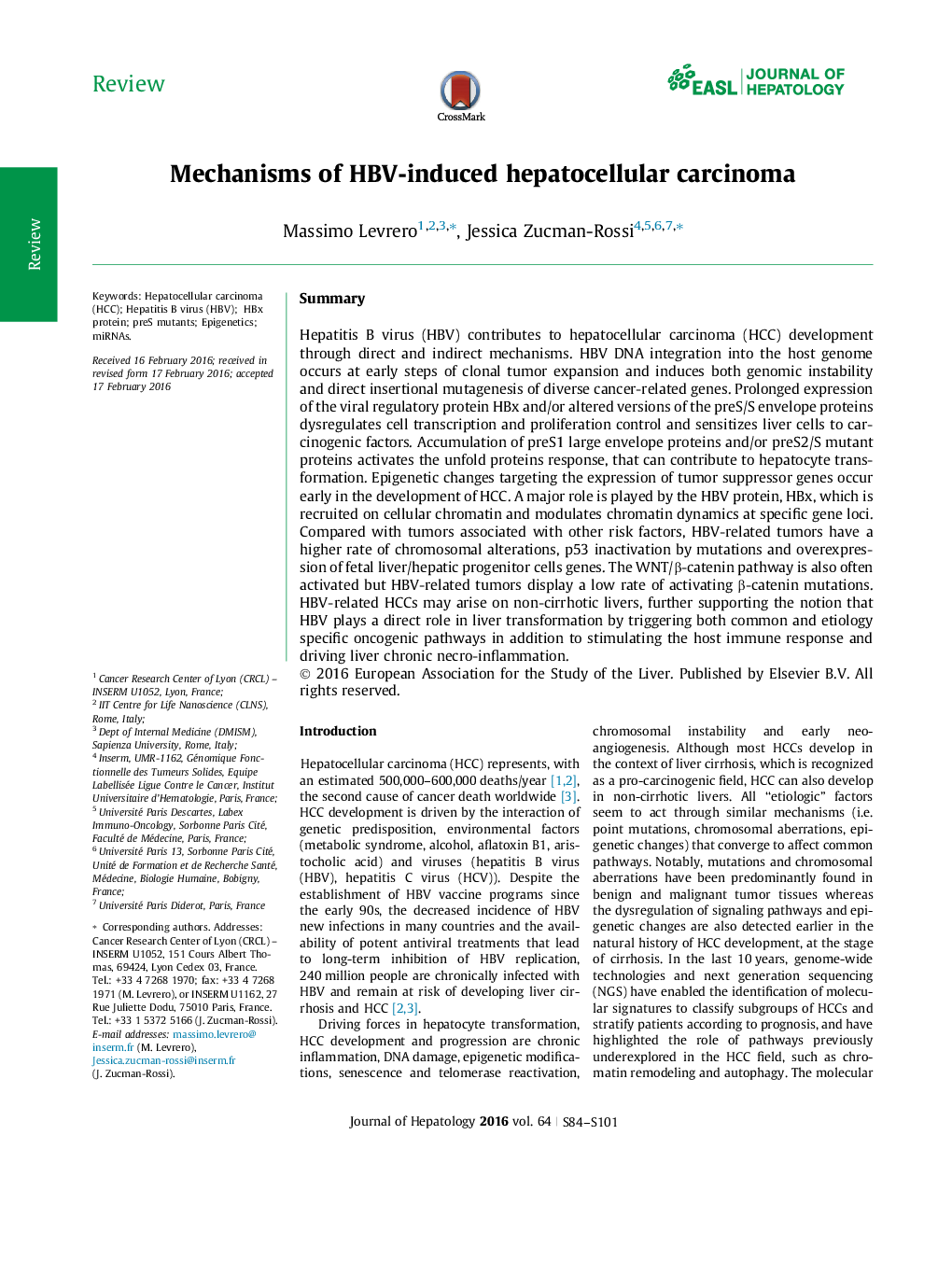| Article ID | Journal | Published Year | Pages | File Type |
|---|---|---|---|---|
| 3313543 | Journal of Hepatology | 2016 | 18 Pages |
SummaryHepatitis B virus (HBV) contributes to hepatocellular carcinoma (HCC) development through direct and indirect mechanisms. HBV DNA integration into the host genome occurs at early steps of clonal tumor expansion and induces both genomic instability and direct insertional mutagenesis of diverse cancer-related genes. Prolonged expression of the viral regulatory protein HBx and/or altered versions of the preS/S envelope proteins dysregulates cell transcription and proliferation control and sensitizes liver cells to carcinogenic factors. Accumulation of preS1 large envelope proteins and/or preS2/S mutant proteins activates the unfold proteins response, that can contribute to hepatocyte transformation. Epigenetic changes targeting the expression of tumor suppressor genes occur early in the development of HCC. A major role is played by the HBV protein, HBx, which is recruited on cellular chromatin and modulates chromatin dynamics at specific gene loci. Compared with tumors associated with other risk factors, HBV-related tumors have a higher rate of chromosomal alterations, p53 inactivation by mutations and overexpression of fetal liver/hepatic progenitor cells genes. The WNT/β-catenin pathway is also often activated but HBV-related tumors display a low rate of activating β-catenin mutations. HBV-related HCCs may arise on non-cirrhotic livers, further supporting the notion that HBV plays a direct role in liver transformation by triggering both common and etiology specific oncogenic pathways in addition to stimulating the host immune response and driving liver chronic necro-inflammation.
